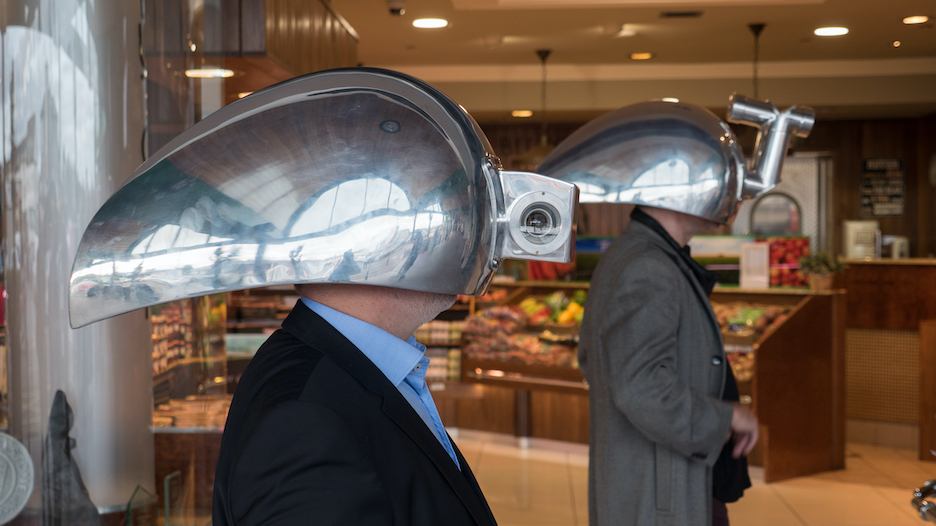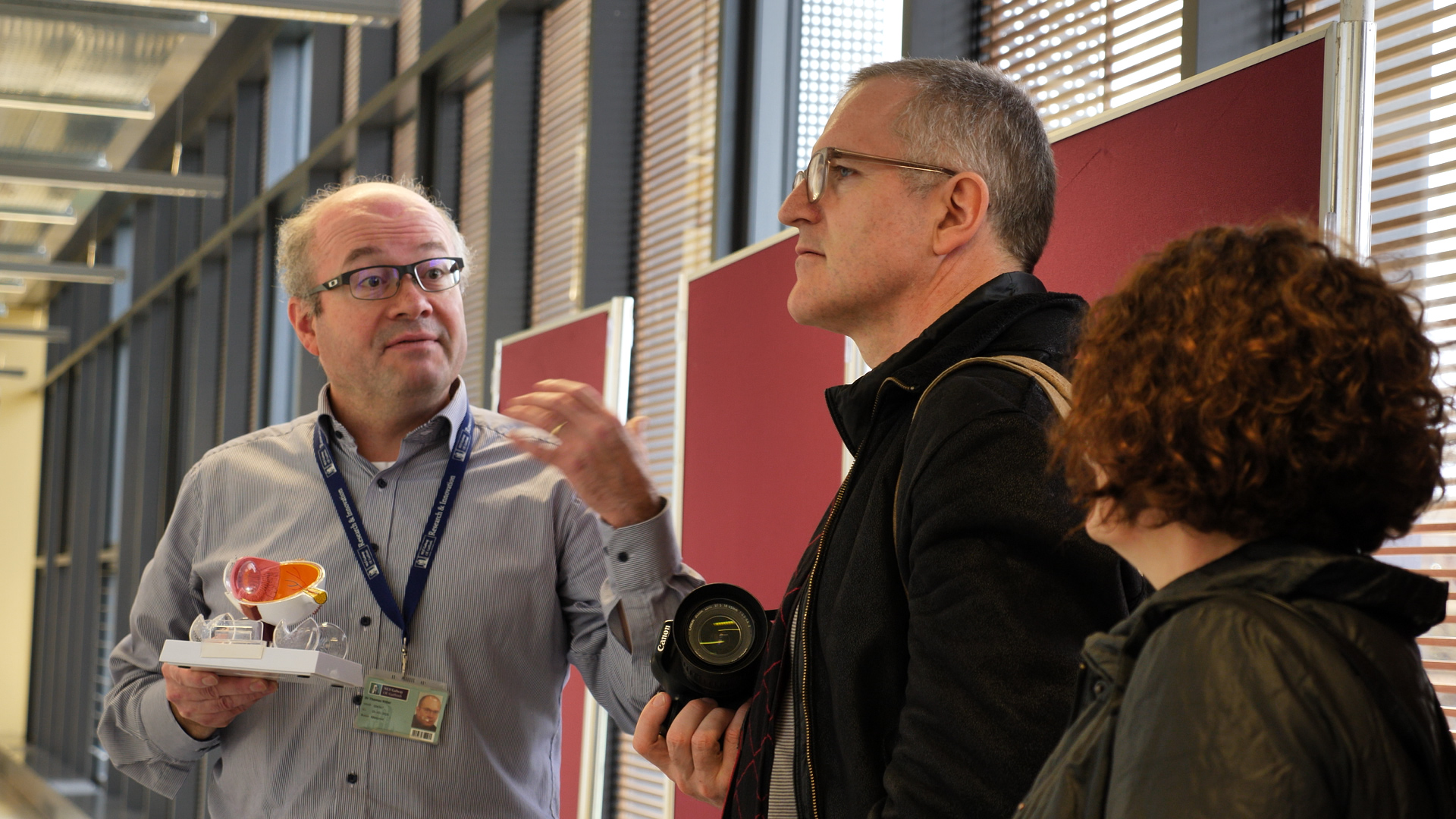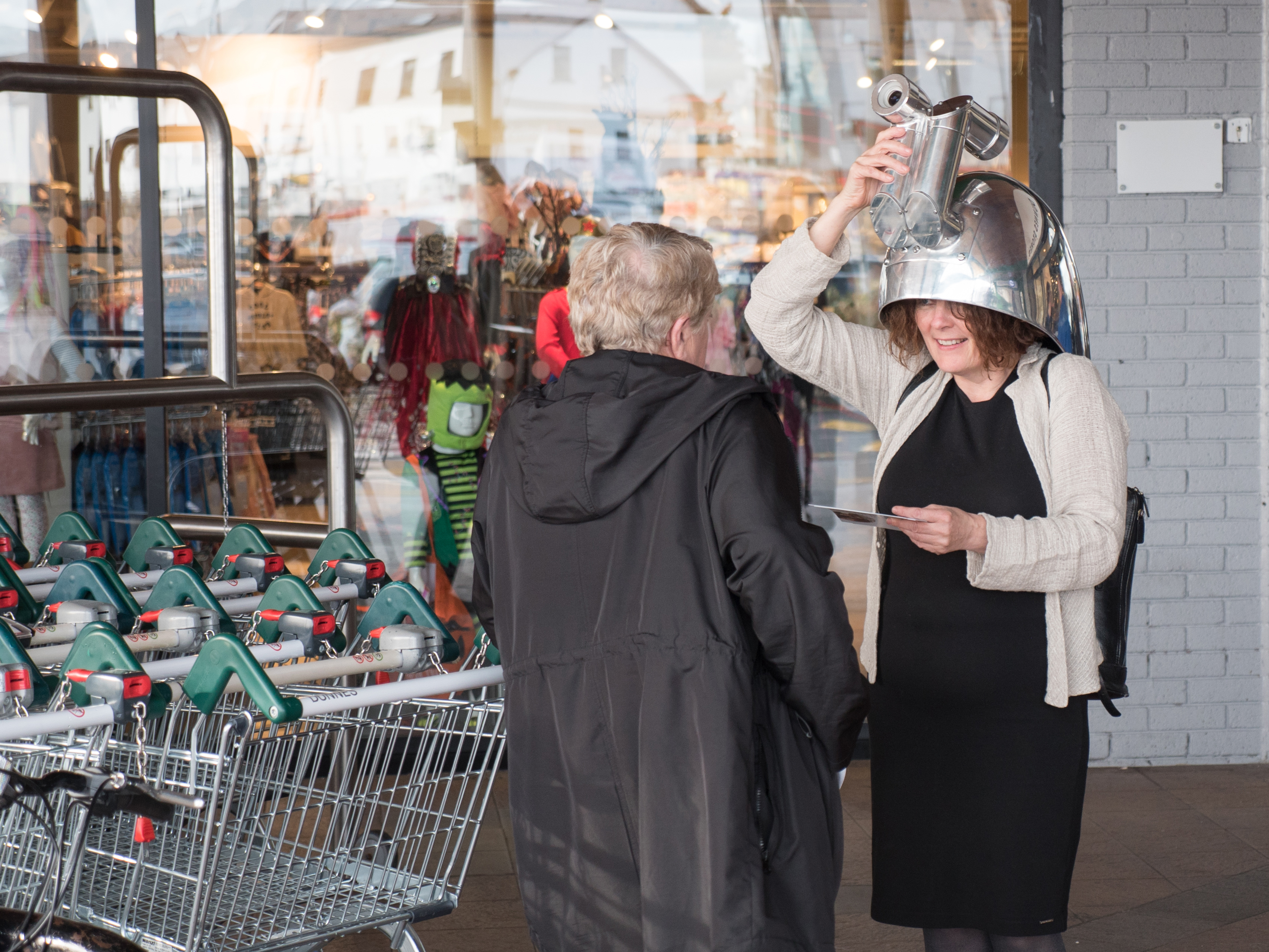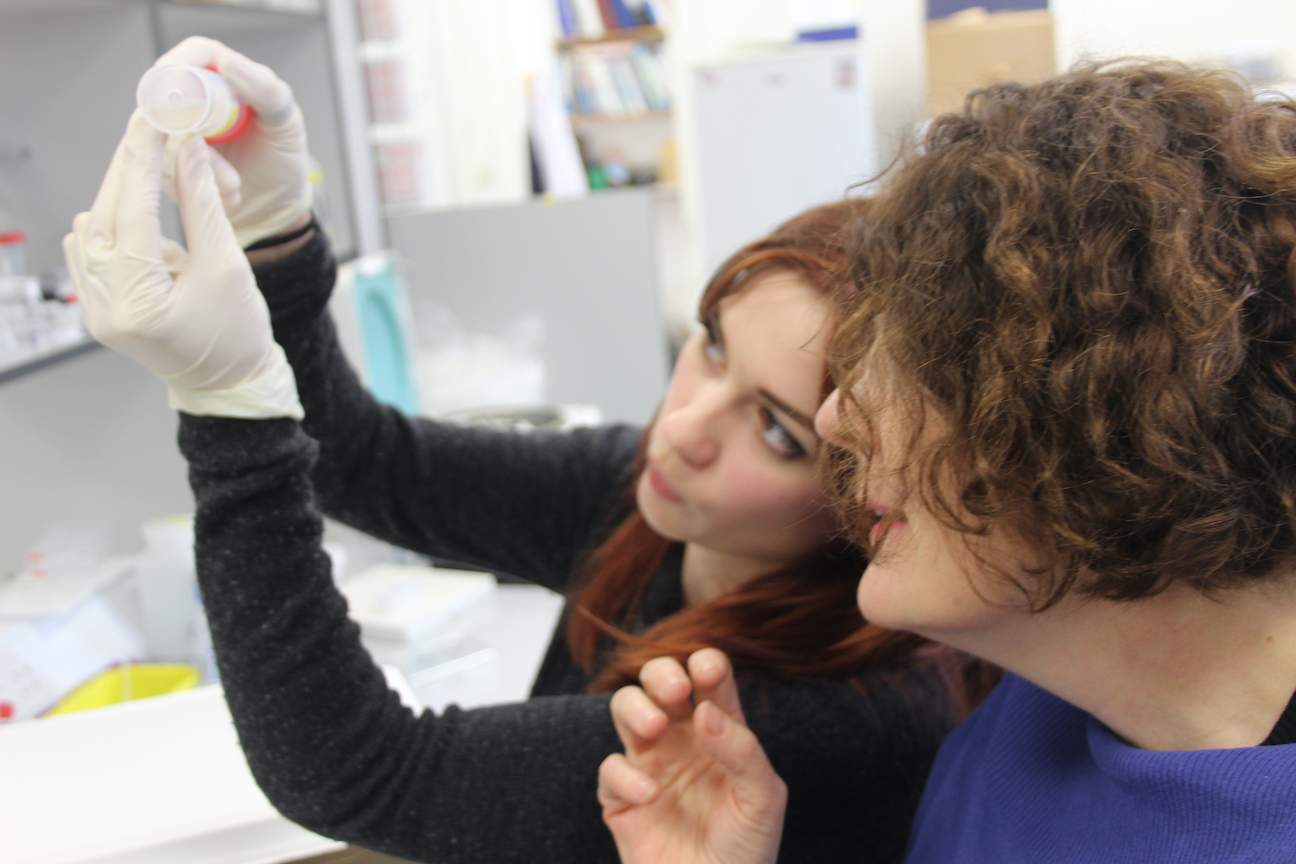
In 2017–2018, award winning artists Anne Cleary and Denis Connolly, who live and work between Paris and Ireland, were selected to develop an art-science project with the Westside community using research being carried out at CÚRAM, the Science Foundation Ireland Centre for Research in Medical Devices based at NUI Galway, as their inspiration.
Cleary explains: “We had a really challenging mandate to try to engage the Westside Community with CÚRAM research. [But] we found a device, which was storytelling, to bring people together. The art project made a bridge between the researchers and the community – and a bridge between art and science.”

CÚRAM, together with Galway City Arts Office commissioned the Community Art-Science project for the Westside community in Galway City. Cleary Connolly’s highly engaging artworks focus on vision, perception of space and the relationship with the public.
“A lot of the art that we do is concerned with perception, particularly visual perception, to the point where we started to collaborate with scientists who work on the eye. That was what we talked to CÚRAM about – we wanted to develop a project called The School of Looking,” says Connolly. This concept later became the name of our art practice.
The work of Professor Thomas Ritter strongly informed the AfterImage project. Prof Ritter researches corneal transplants and identifying ways to improve the receptivity, and reduce rejection, of transplanted corneas. In learning about Prof Ritter’s work, Cleary Connolly took a particular interest in the mechanics of the eye.

Cleary Connolly design interactive environments that often integrate new technologies and with this project, created a permanent artwork which acknowledges the various communities of Westside and celebrates their connection to CÚRAM and the MedTech Industry. Their meta-perceptual helmets ingeniously invite us to set aside our preconceptions and to experience things in ways quite different from the norm. Wearing the helmets, you become a hybrid creature yourself, part human, part machine, part animal, but also: part work of art.

The images shown here, are portraits of both researchers and members of the community, set against a background of a research image, be it research being carried out in CÚRAM or research that people would like to see. Cleary Connolly connected that to their interest in vision using the phenomenon of negative afterimage.

Connolly explains: “When you look at a colour for 10–15 seconds it bleaches that colour out of your retina by over stimulating the cones that receive that colour. Then when you look at another image you cannot see the colour, it becomes an afterimage, or the negative of the colour. From that we developed a particular challenge to show people an abstract coloured composition and then a black and white image. And if their eyes don’t move between the two, the black and white image is coloured by the image they’ve seen before. So it becomes this interesting composition where you look at two very different images and the two work together to give you a full colour image.”
The result was a series of beautiful portraits of the researchers and of local people together. James Coyne, CEO of the Westside Community Resource Centre notes the impact of the work: “One of the more interesting parts of [the project] was the artists deciding on the backdrop that was placed behind the person’s portrait. They very cleverly found images that they felt matched what the person had said they were interested in. The portraits are much stronger because of that little glimpse of the mind of the person involved. It allowed the participant to bring something of themselves into the project.”
Reflecting on the impact of AfterImage, Garry Granville, Professor Emeritus of Education at the National College of Art and Design (NCAD) said: “[Cleary Connolly] fashioned a stunning piece of visual art through imagery using technology. It struck me as a great example of where art and science don’t just meet and talk but fuse—they become one.”

Anne summarises the project: “We’re all artists and all scientists. We’re all interested in discovery and invention and creation and I think what’s important about this type of project is that you’re opening that up to the community.”